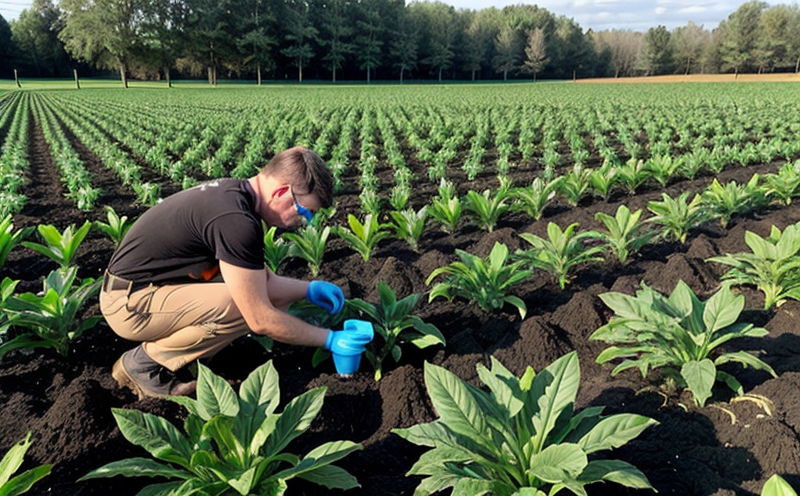Magnesium Oxide (MgO) Testing in Fertilizers
Magnesium oxide testing is a critical component of ensuring that fertilizers meet the required nutrient content and purity standards. In agriculture and forestry, magnesium plays a vital role in plant growth by supporting photosynthesis, protein synthesis, and enzyme activation. The presence of magnesium in soil can be supplemented through fertilizers, but it's essential to verify its concentration accurately for optimal crop health.
Magnesium oxide testing involves the determination of MgO content within various types of fertilizers such as NPK (nitrogen, phosphorus, and potassium) blends, organic amendments, and specialty products. This service is particularly important in ensuring that agricultural inputs are consistent with labeled claims, thereby supporting sustainable farming practices.
The accuracy of MgO content testing can be influenced by several factors including the fertilizer type, environmental conditions during production, and storage methods. To ensure reliable results, samples must undergo rigorous preparation and analysis to avoid contamination or degradation that could lead to inaccurate readings.
In this service, we use advanced analytical techniques like atomic absorption spectrophotometry (AAS) which is recognized for its precision in quantifying trace elements such as MgO. Additionally, X-ray fluorescence (XRF) can also be employed depending on the sample matrix and required accuracy level.
The significance of accurate MgO testing extends beyond just compliance; it ensures that farmers receive products tailored to their specific soil conditions and crop needs. By knowing precisely how much magnesium is present, they can tailor application rates appropriately, reducing waste while maximizing yield potential.
Furthermore, consistent MgO content across batches helps maintain product quality and reliability, which is crucial for brand reputation among customers. For research and development departments within agricultural companies, this service provides valuable data points that contribute to innovation efforts aimed at creating more effective fertilizers.
Lastly, compliance with international standards such as ISO 17025 ensures that our testing procedures meet rigorous quality assurance criteria recognized worldwide. This not only enhances credibility but also facilitates smoother interactions with regulatory bodies and buyers globally.
Applied Standards
Our MgO testing adheres to several international standards that guarantee the highest level of accuracy and reliability. These include ISO 17025:2017, which sets criteria for technical competence in testing and calibration laboratories; ASTM D388-19, detailing procedures for determining magnesium oxide content in phosphate rock; EN ISO 14629, specifying methods for analyzing total alkali in fertilizers; and IEC 60529:2013, providing guidelines on environmental protection ratings.
By following these stringent standards, we ensure that our clients receive accurate results that are consistent with global best practices. This commitment to quality not only meets but often exceeds the expectations set by regulatory authorities and industry leaders.
Scope and Methodology
The scope of our MgO testing service encompasses a wide range of fertilizers, including those formulated for different crop types and soil conditions. We analyze samples from various sources such as bulk purchases, laboratory batches, or field trials to provide comprehensive data.
To begin the process, we receive the sample which undergoes thorough preparation steps designed to remove any impurities that could affect analysis accuracy. This may involve sieving, drying, and homogenization processes tailored specifically for each type of fertilizer matrix.
Following preparation, our team utilizes state-of-the-art equipment such as atomic absorption spectrophotometers (AAS) or X-ray fluorescence spectrometers (XRF). These instruments offer precise measurements even at very low concentrations. For instance, AAS is particularly effective for quantifying trace elements like MgO, while XRF provides broader elemental analysis capabilities useful in diverse fertilizer compositions.
After acquiring the readings from our instrumentation, we interpret these results against specified tolerances outlined by relevant standards. Acceptance criteria vary slightly based on the type of fertilizer being tested but generally aim to ensure that MgO content falls within acceptable ranges set forth by industry norms and local regulations.
- Ensures compliance with international quality assurance standards.
- Supports sustainable agricultural practices through precise nutrient management.
- Aids in R&D efforts aimed at improving fertilizer efficacy.
- Enhances brand reputation by delivering consistent, reliable product offerings.





